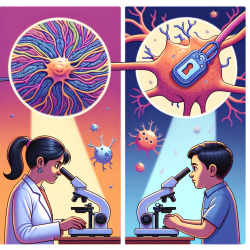Introduction
In the realm of healthcare, patient safety remains a paramount concern, with data consistently highlighting the prevalence of adverse events across the globe. The research article "Information technology and patient safety in nursing practice: an international perspective" underscores the critical role of information technology (IT) in enhancing patient safety. This blog post aims to translate the findings of this research into actionable insights for practitioners, particularly those involved in online therapy services like TinyEYE, to improve their skills and outcomes for children.
The Role of Information Technology in Patient Safety
According to the research, IT serves as a cornerstone for improving safety by enhancing communication and delivering decision-support tools. For nursing practitioners, this means leveraging technology to prevent errors and improve patient outcomes. Here are some key takeaways from the research:
- Communication Enhancement: IT tools can streamline communication among healthcare providers, ensuring that critical information is shared promptly and accurately.
- Decision Support Systems: These systems provide nurses with real-time access to patient data and evidence-based guidelines, aiding in clinical decision-making.
- Monitoring and Reporting: IT facilitates the monitoring of patient safety indicators and the reporting of adverse events, enabling timely interventions.
Practical Applications for Online Therapy Services
For companies like TinyEYE, which provide online therapy services to schools, integrating IT solutions can significantly enhance service delivery and safety. Here are some practical applications:
- Telehealth Platforms: Utilize secure and user-friendly telehealth platforms that support video conferencing, file sharing, and real-time data exchange.
- Electronic Health Records (EHR): Implement EHR systems that allow therapists to access and update patient information seamlessly, ensuring continuity of care.
- Data Analytics: Use data analytics to track therapy outcomes and identify patterns that may indicate safety concerns or areas for improvement.
Encouraging Further Research and Development
While the current research provides valuable insights, ongoing research and development are crucial for advancing patient safety in nursing practice. Practitioners are encouraged to engage in continuous learning and collaboration with IT experts to explore innovative solutions that address emerging challenges in healthcare.
Conclusion
By embracing information technology, nursing practitioners can play a pivotal role in enhancing patient safety and improving healthcare outcomes. For those involved in online therapy services, leveraging IT solutions can lead to more effective and safer interventions for children. To delve deeper into the research findings, please follow this link: Information technology and patient safety in nursing practice: an international perspective.










